
Britain’s five best museums – featuring space ports, Covid jabs and free dinners
‘Albert Hirst’s pies were legendary,” recalls Ian McMillan, the poet known as the Bard of Barnsley. He’s talking about his favourite exhibit at Experience Barnsley: a carrier bag for the long defunct butchers. “Personally, I prefer Potters of Wombwell. But that’s heresy for many. People sniff the Albert Hirst bag like it’s a holy relic, which in a sense it is. And then they argue about who made the best pies and go into reveries about their aromas.”
Experience Barnsley is one of the five museums that have made the shortlist for the Art Fund Museum of the Year prize. The winner, announced in September, will get £100,000 and the other four £15,000 apiece. Deeply rooted in their communities, each one is keen to revolutionise what a museum can be in the 21st century.
Experience Barnsley only opened in 2013, with hardly anything to exhibit. Lynn Dunning, head of Barnsley Museums, remembers that people in the borough and beyond were invited to submit artefacts of local significance. “One man contacted us to say he had a stone,” she says. But it turned out to be a 5,000-year-old axe head found in the 1920s when nearby Scout Dike Reservoir was built. It had been used for many years as a doorstop. “The British Museum may have thousands of neolithic axe heads,” says Dunning. “But we have one, too. And the story attached to it makes the past, and the local connection, come to life.”
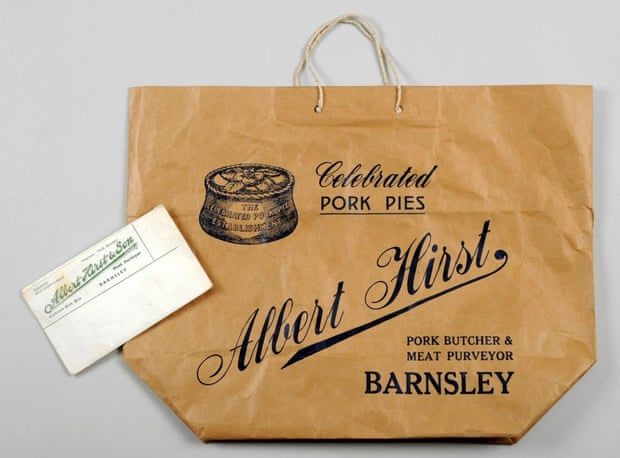 Lovely aroma … an Albert Hirst butcher bag.
Lovely aroma … an Albert Hirst butcher bag.
Experience Barnsley bills itself as “by the people, for the people and about the people”. It is also, says Dunning, aimed at showing there’s more to the Yorkshire town than coalmines and men in flat caps walking whippets. Barnsley is, after all the birthplace of both Joseph Bramah, inventor of the patented flush toilet, and footballer Tommy Taylor, one of the Busby Babes.
And much more. In 2022, Experience Barnsley will mount an exhibition exploring the town’s links with the sports goods manufacturers Slazenger. McMillan recalls working at Slazenger’s tennis ball factory on the “buff and dip machine”. What did that involve? “You got two halves of a ball and buffed and dipped them,” he explains. “Later I was promoted to pressing the two halves together. And then we had to ensure that the pressure of the resulting balls was right. They had to be 21lbs for most altitudes, but 14lbs for higher altitudes.” Why? “So they didn’t bounce too high.”
One prized exhibit is a script for Ken Loach’s Barnsley-set film Kes. “You ask anyone round here and they say they were in the film. I was in the shot at the back of the assembly, they’ll say. But you only went to school in 1974 and the film was made in 1969, I’ll reply. It’s our Moby-Dick, our Great Gatsby, so to have the script on display is a wonderful thing for the town.”
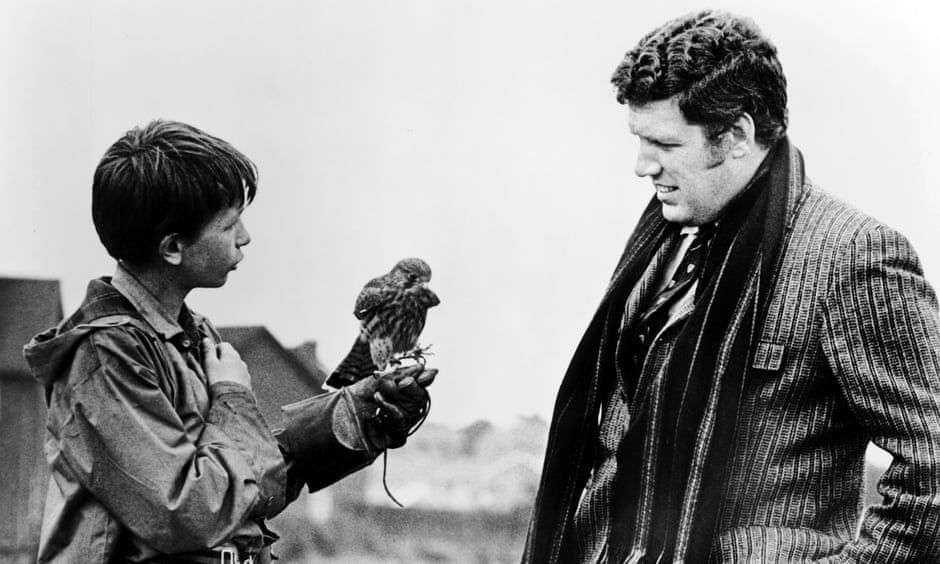 The film everyone in Barnsley says they were in … the 1969 film Kes; its script is in the museum.
The film everyone in Barnsley says they were in … the 1969 film Kes; its script is in the museum.
During the past 18 months, McMillan has been the museum’s poet in residence. “Lynn asked me to chronicle the times in verse.” One of his sonnets ended thus:
As the nights get their coats on, love’s
the thing that keeps me going. Love’s the skin
that hold us all together through this time
Like poems are held together by the rhyme.
For Dunning, the poet’s residency typified how the museum operated during lockdown: “Our team could have just closed down but instead we kept working, sending care packages to care homes and doing what we could. A public place like a museum is a safety net for a lot of people and we had a responsibility to the town to keep working.”
It’s a story that has been replicated across all of the shortlisted museums. Sally Shaw, director of Firstsite in Colchester, Essex, says that soon after she arrived in 2016, the gallery’s restaurant was forced to close. Around the same time, she learned free school meals had been cut back and so opened the restaurant to serve deprived kids.
But isn’t it terrible that a museum has been plugging the gaps? “It’s disgusting,” says Shaw, who worked with Boris Johnson when he was London mayor, developing the fourth plinth project in Trafalgar Square. “There’s something horribly wrong when it takes a footballer like Marcus Rashford to tell the prime minister he’s got it wrong in cutting free school meals. And it’s disgusting when it takes a museum like ours to feed children who have been deprived of them. But we still do it.”
One corollary is that those who benefited from the free meals at Firstsite often went on to visit its galleries for the first time. At a time when museums’ footfall is declining and gallery goers are increasingly aged, middle-class and white, that is perhaps is a good thing. During lockdown, Shaw, like many of her peers around the country, wondered how to make her gallery relevant while it was closed to visitors. Her idea was to commission more than 40 artists, including Antony Gormley, Cornelia Parker, Sarah Lucas, Mark Wallinger, Eddie Peake and Michael Landy, to contribute to its free home activity packs, which have had more than 50,000 downloads from across the world.
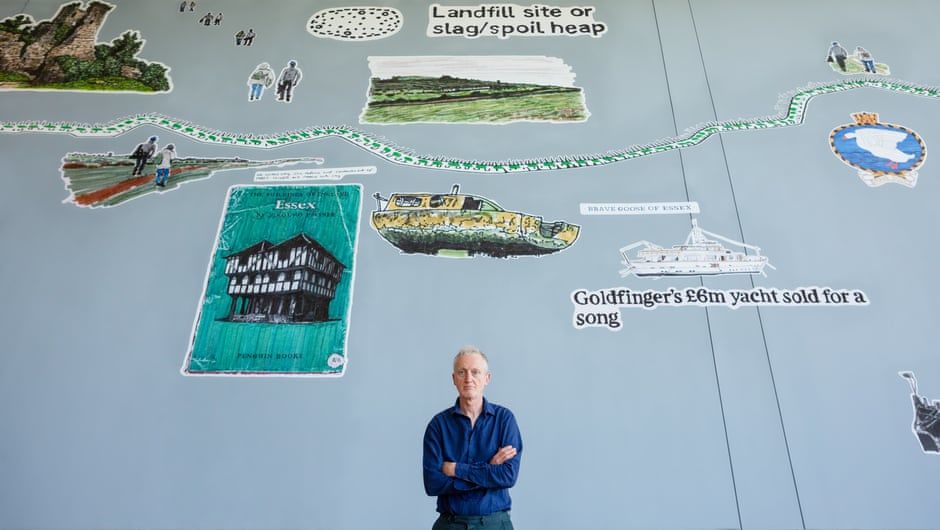 ‘The most wilfully misunderstood county’ … Michael Landy’s Welcome to Essex at Firstsite.
‘The most wilfully misunderstood county’ … Michael Landy’s Welcome to Essex at Firstsite.
“I had been making towers of toilet rolls ever since first year at Goldsmith’s art school,” says Landy, “so it seemed logical to suggest that kids makes towers of toilet rolls.” Landy also has an exhibition at the moment at the gallery called Michael Landy’s Welcome to Essex, a vast, free multimedia show aimed at subverting the county’s stereotypes.
“I remember reading about [Countdown presenter] Rachel Riley going to Canada and telling some Canadians she was from Essex and they said to her: ‘We know all about Essex.’ And what they knew was all the stereotypes. It’s the most wilfully misunderstood county. I wanted to examine all the pros and cons, from press headlines to The Only Way Is Essex. But there’s not that much enthusiasm for that locally. I don’t think the exhibition would have got off the ground were it not for Sally’s interest.”
Lockdown has proved catalysing, too, for the Centre for Contemporary Art Derry~Londonderry. Back in 2013, the then city of culture played host to the Turner prize and the art world caravan arrived briefly in town. “I remember that well,” says Derry artist Janie Doherty. “It was a like a big shiny bus that came through and went off somewhere else. There was a lot of talk about legacy, but not much of it in reality. What has sustained the city’s artistic life more is the Centre for Contemporary Arts. During lockdown especially, it’s been like a little hug for the city.”
What she means is that, though the CCA has been closed for much of the past 18 months, under the aegis of director Catherine Hemelryk it has served its local community in new ways. “One idea was to have what we called takeovers, where for a full day artists participating in our online programme would share their research and interests on social media,” says Hemelryk. “So you could get a real insight into how they work and the art they love.”
She also decided that even though the CCA’s biennial exhibition Urgencies could not take place in the gallery this spring, some of the artworks could be displayed in the city through the windows of empty buildings. “I wanted people, when they went out on their lockdown walks, to come across art in the windows, all day and all night. Art suddenly hit the street, giving something to the people of the city.”
Doherty and fellow local artist Locky Morris collaborated on a poignant video piece commissioned by Hemelryk called (Nothing But) Windows, consisting of improvised videos screened through the windows of the closed CCA gallery on Artillery Street at all times. “What was important was the way the videos explored the sense of touch, which was one of the senses lacking because of social distancing. It resonated for a lot people.”
But for Hemelryk the most important role her museum has had during lockdown has been to support artists, overwhelmingly local ones, with work and social connections. “Like a lot of people, they’ve been feeling isolated during lockdown because they haven’t been able to work in studios or galleries.”
Which of the shortlisted five should win the £100,000 prize? “We should, obviously,” says Nat Edwards, CEO of Thackray Museum of Medicine in Leeds. “After the year we have had, who better than us?” He’s especially proud that, on 8 December last year, the Thackray became the first museum in the world to offer Covid vaccinations. He’s proud, too, that the Thackray collection was studied by local engineering firms to see how to make ventilators for Covid patients, and that his staff were involved in food distribution from Morrisons supermarket to frontline health workers at the St James University hospital next door.
But he’s especially proud of a letter he got recently from a 10-year-old Congolese girl. “She is from a family who run a clinic in the Congo and she spent about five hours in the museum before writing this incredible letter setting out what she learned and saying how she was inspired to specialise in laparoscopy [keyhole surgery] when she grows up. That makes everything we do worthwhile.”
The Thackray opened in 1997 with an intriguing collection, housed in a former workhouse that has just reopened after a £4m refurbishment. Edwards says his favourite exhibits are the first world war facial prosthetics developed for injured soldiers by both surgeons and artists.
“Some are incredibly beautiful. I also love our collection of hearing aids. Some were designed to be concealed by Victorian gents’ beards. And there was another hidden inside a tiara, which actually belonged to Queen Victoria. We also have Prince Albert’s medicine box, a beautiful mahogany chest containing remedies and prescriptions he received for his stomach troubles.”
The gallery has enchanted visitors with such crowd-pleasing displays as Leeds 1842, a walk-through reproduction of slum streets in which visitors could follow the lives of eight characters and how their choices determined their survival among rats, fleas and bedbugs. Another exhibit, Hannah Dyson’s Ordeal, is a video reconstruction of one woman’s surgical leg amputation without anaesthetic.
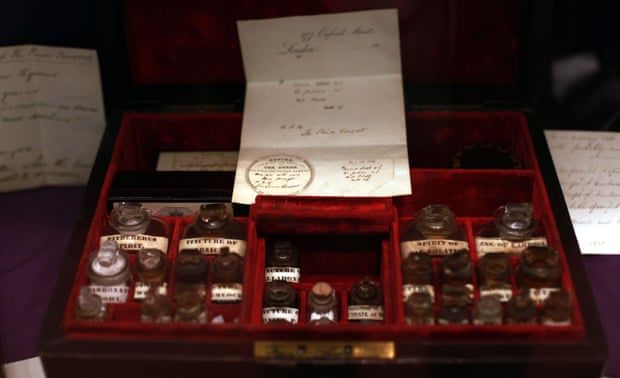 Time for a tincture … Prince Albert’s medicine chest.
Time for a tincture … Prince Albert’s medicine chest.
Epidemiologist Dr Adam Kucharski enjoys how the Thackray doesn’t focus on lone geniuses or make heroes of nurses, doctors and surgeons, but rather emphasises the collaborative nature of advances in medicine. “That’s the way the story of science should be told but too often isn’t,” he says. “It’s a co-production.”
Perhaps the most surprising museum on the shortlist is a little one in Helmsdale on the east coast of Sutherland, not too far from John o’Groats. “We especially enjoyed the video about the herring industry,” wrote one visitor, Brian from Coupar, on Tripadvisor. But Timespan has become so much more. For a long time, recalls village resident Edwyn Collins, the former frontman of Orange Juice, Timespan “wasn’t much good”. Grace Maxwell, Collins’ wife and manager and member of the Timespan board, adds: “In the 1980s, it focused on things like neolithic artefacts.” But in 2018, recalls Collins, a pink Norman Hartnell dress that had belonged to Barbara Cartland was displayed as part of the Made in Helmsdale exhibition: the late romantic novelist had long associations with the village, and was one of the prime movers behind the museum.
Timespan also became a stopping-off point for those touring the Highlands to study the Clearances, the evictions of tenants by landlords between the late 18th century and into the 19th, to make way for lucrative large-scale sheep farming and deer rearing. To that end, in 2013 Timespan launched a very popular app called Museum Without Walls: Scotland’s Clearances Trail, which enabled those visiting the nearby Strath of Kildonan to learn about the particularly brutal clearances that took place there.
But Timespan has latterly changed its perspective on this tragic local history. Its Twitter bio says it has “local, global and planetary ambitions to weaponise culture for social change”. The weaponiser-in-chief is the remarkable young Glaswegian Sadie Young, who arrived in the village three years ago to become Timespan director.
Last spring, Timespan launched a digital exhibition called Real Rights, presenting the history of Helmsdale within “the intersecting frames of climate change and colonialism”. The exhibition attacked “the romanticised image of the Highlands as sublime empty landscapes of brooding heather and mighty stags”. It explored the mythologisation of the Highlands as a place of leisure and questioned “the Scottish ancestry industry and its role in promoting a mono-economic tourism strategy for the Highlands, while ignoring the colonial genesis of the Scottish diaspora and marketing a fetishistic national identity.”
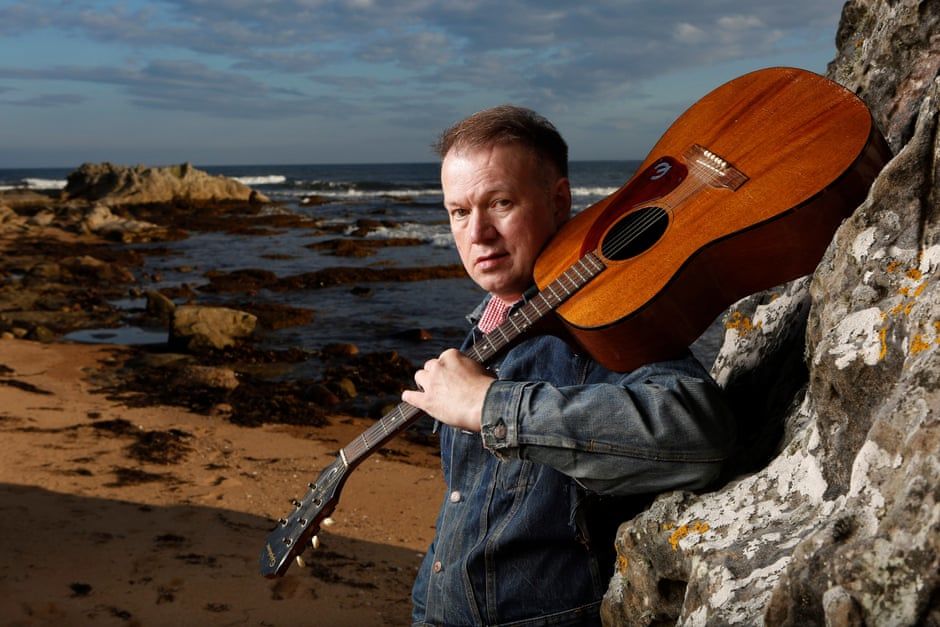 Rip it up and start again … musician Edwyn Collins, a Helmsdale local, enjoys the new face of Timespan.
Rip it up and start again … musician Edwyn Collins, a Helmsdale local, enjoys the new face of Timespan.
How did this go down with the locals? “There were some flag-waving Tories who didn’t like it,” says Young. “But like everybody in this area, they’re prepared to have conversations about what culture is and what our history amounts to. That is what museums should be about, rather than being just another branch of the leisure industry.”
As for Collins – who settled in the village where his grandfather had lived after suffering two cerebral haemorrhages in 2005 – Timespan has been a boon. “I’m extremely fond of it and the life it has given the village,” he says. He has so far only played one gig there, but has also exhibited drawings he made during his recovery. “I was right-handed but my right arm is useless now. I’ve learned to draw with my left. Timespan were kind enough to exhibit my drawings even though,” he says, “they’re shit.” He’s wrong: Collins’ bird drawings, which were a key to his recovery, are delightful.
He adds that the gig he really enjoyed at Timespan was one last November at which London rapper and political activist Lowkey (AKA Kareem Dennis) performed. “He came on and said, ‘Hip-hop is dead! But it’s alive in Helmsdale!’” Maxwell adds: “It was a wonderful night. I’m not sure many villagers had danced to hip-hop before but they did that night.” For Lowkey, Timespan was a refreshing place. “In London, where I’m from, you don’t get the very close contact with serious political analysis in museums. Timespan is unique.”
Lowkey also took part in a project called Radio Stars that lets 12-to-17-year-olds find out about Lockheed Martin’s proposed Sutherland spaceport. “We were able to really investigate this organisation and think about whether the Highlands needs an arms manufacturer,” he says. It’s typical of the subversive, politically charged initiatives that Young has encouraged. In a wee building on the edge of Britain, she and her team are changing what museums are for and what they can do.











